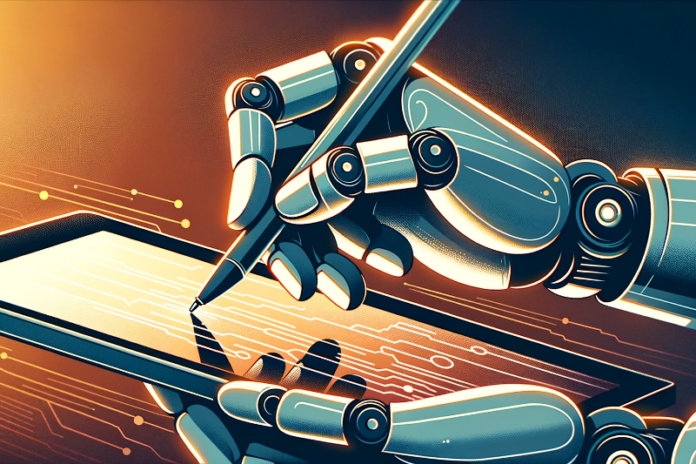In the automation space, California-based Workato is aiming to revolutionise how industries operate their businesses, one transformation at a time.
Carter Busse, the company’s Chief Information Officer, sat down with Frontier Enterprise, to share how their tech is being applied within their business units, how AI is changing the automation landscape, and how the role of the CIO is multifaceted at a company like Workato.
How do you use Workato internally?
We use it for all of our onboarding and offboarding. One big use case that we’ve done is the complete onboarding process, primarily focusing on new employees. From the time the candidate signs their offer letter to their first day, there is no IT team involvement at all. We’ve actually automated the emails to the candidate. We’ve automated provisioning applications. We’ve actually automated seamless approval processes for certain applications, and who their buddy is going to be— it’s all through our work bots. Even to provision the laptop, and shipping the laptop out— it’s all completely automated.
We also use our platform for onboarding a customer, approving deals, provisioning it, and billing. Once that deal is closed, there’s really very little human involvement except for approvals of the deal. The provision is actually automated, too.
We use it for a lot of marketing enablement; for example, our lead routing process. We might get leads from the Workato Automate Asia 2023 event, for example. That entire lead process of how it’s entered in Salesforce, and dispositioned by a sales development rep, and then worked on, acted upon— is all automated. Then we take that one process and open up an API for partners to plug into.
How do you verticalise Workato?

We don’t really have a specific engineering tackle right now. We definitely have all our customers pushing us to be highly secure. But our go-to-market motions are different. We’re thinking about doing a healthcare vertical, as well as a government vertical. As far as engineering is concerned, we really find that when venturing into healthcare, government, or financial services, these sectors are pushing us on the security side quite a bit, as well as on the governance and regulation side.
We can use those kinds of learnings from those verticals to inform our go-to-market strategies and feed engineering. Plus, we really architected this product to be vertical-agnostic, and technology-agnostic. We have smart connectors onto thousands of applications already. It’s all API-based so the connectors actually work on top of these ERP APIs.
A lot of the automation has so far been rules-based, or very deterministic in a sense, until the arrival of AI. How are you integrating AI into your solutions?
There are two ways we’re using AI. We’re helping our customers build workflows, and build connectors with AI. We have recipes for workflow automation. We type in English what you want to connect. For example, if I want to connect Troopr to NetSuite, then I just type that in our Copilot and it actually writes the recipe. So it’s Copilot recipes.
We also talked about connectors; we’re using AI to write connectors. Most applications have an API document, and if a connector isn’t already available, we ingest that API documentation. With AI, we automatically create the connector. For both recipes and connectors, there’s a small statement at the bottom indicating that the AI might not be fully accurate, necessitating some adjustments. That covers one side of how we’re integrating AI.
Another side of AI where we’re working with many customers is the integration of LLM into their business process.
These could be open-source LLMs or private LLMs. I feel like LLMs are evolving to function much like applications someday. You might find specific LLMs tailored for, say, clinical or healthcare businesses, and others for financial services. These enterprise automation tools, like Workato, will be the tool you use to plug into the LLM. LLMs are really just their set of APIs for a digital brain to talk to, and you need a workflow engine that speaks APIs, since LLMs typically lack a user interface. It’s all about the API. We truly feel that LLMs and enterprise automation together really helps business scale.
Can you discuss which roles at Workato fall under the office of the CIO?
The go-to-market strategies fall under the CIO, as the CIO is responsible for integration. That’s one motion. As a CIO, I’m often tasked with stitching applications together. Marketing or sales may acquire a new tool and then request, ‘Hey, can you plug this into Workday?’ And my response is, ‘Hh, sure. I’m glad I can help you out.”
We also found out that revenue operations, those folks are under the gun to improve sales velocity and close deals faster, so we go into rapid revenue operations motion.
For HR operations, we’re going right into HR operations to help them with the onboarding process.
In terms of customer success, the focus is on how quickly we can get back to customers once they are onboarded. How quickly can we turn unhappy customers happy again? The journey begins with the CIO, but extends through to other operations groups immersed in technology every day.
Back in 2019 to 2021, businesses would just buy stuff, with IT only finding out about it later. However, because of the macroeconomic factors, security, IT, and procurement now play a part in the decision-making process. Mr Marketing person can give the budget, but let’s talk about security. “We already have an application that does this. Do you want to integrate?” So I feel like given the macroeconomic times we’re in, we’re becoming more involved in these purchases decisions.
How do you see the automation landscape evolve in the future? Will there be one giant automation integration connector platform across the enterprise?
Automation has been around for a long time. It has a huge track record of being a sort of task automation, automating a UI, and automating mouse clicks. That only gets you so far, and you’re really just automating a current process. But we truly believe that integration automation— that’s where it’s going. We can do full process automation, and not just task automation. You actually rethink your process with that.
With task automation, you’re just automating the current process that’s been around for 20-30 years. If you really think about process automation, and moving data across applications, you can have a whole different way of rethinking your business process.
















